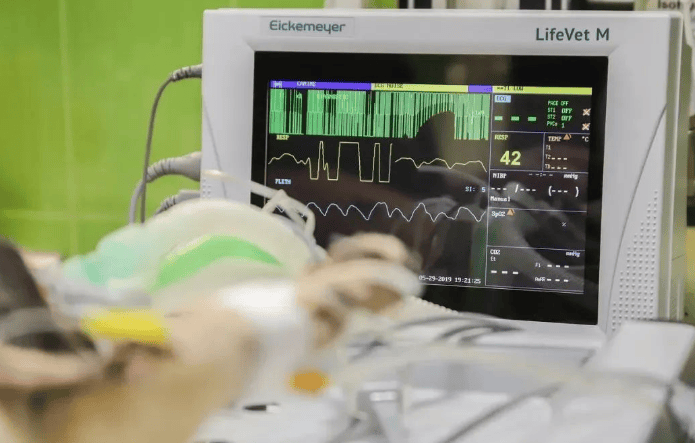If broken down, the operation of removing the uterus and ovaries of female cats is called sterilization, and the operation of removing testicles of male cats is called castration. The purpose is to no longer let the animals go into heat and reproduce (hereinafter collectively referred to as "sterilization"). This is one of the simplest and routine surgeries in young, healthy animals.

However, various problems often arise during clinical sterilization surgery, which are hereby compiled. The core essentials of neutering for reference by all veterinarians.
1. The best time for neutering
It is recommended that cats and dogs be neutered (castrated) between 6 and 8 months of age.
It is recommended that females be sterilized before their first estrus to better prevent breast tumors. For males, it is also recommended that males be sterilized in time after sexual and physical maturity to avoid developing bad behaviors and to "pursue love." "And there were behaviors like getting lost and fighting.
In terms of specific time, as long as the post-operative care is proper and the female avoids estrus, she can be sterilized or castrated. There is no saying that "a certain season is more suitable for sterilization".

2. Precautions before sterilization
1 . Preventive health care: Kitten sterilization surgery should be performed at least after the first vaccination, preferably two weeks after all vaccinations are completed. Ensuring complete immunity before going to the hospital for surgery can effectively reduce disease infection and transmission.
2. Preoperative physical examination: Veterinarians usually recommend a preoperative physical examination of the cat, assess the cat's individual health status, determine the best surgery date for each individual, and formulate a specific surgical plan for cats with special conditions. The examination mainly includes: body temperature, weight, respiration, heart rate, mucous membranes, surface lymph nodes, bones, abdominal palpation, blood routine and ten biochemical tests, B-ultrasound, X-rays, cardiac screening and special examinations, etc.
3. Starvation period: Under normal circumstances, the cat should stop providing food 8 hours before the operation, and deprive the cat of water 2 hours before the operation. If the doctor has special instructions based on the specific growth and health status of the individual cat, please follow the doctor's instructions.

1. Pain (common exists):
The most common discomfort after surgery is pain in the groin area of cats, which usually manifests as panting, refusal to sit, stiff gait of the hind legs or unwillingness to move the hind legs; some cats will tremble all over, Hiding under the bed or eating less. Usually this obvious pain lasts for 1-3 days. If it lasts too long (wound infection or other problems may occur) or the pain is too severe, analgesics (pay attention to special cases such as liver and kidney damage) and anti-inflammatory drugs can help them properly Relieve pain.
2. Scrotal swelling, congestion, and congestion:
It is more common in adult male cats after sterilization. After surgery, cats may also develop strenuous exercise, excessive rolling, or licking the surgical site. It can easily cause scrotal bleeding and swelling. Usually, scrotal swelling will be absorbed by itself without special treatment. If the pain is severe, painkillers can be provided to relieve the discomfort caused by the pain.
3. Wound site infection (uncommon):
When bacteria enter the traumatic incision and multiply, the wound will become inflamed (red, swollen, hot) or suppurated (invasion) White blood cells produce yellow or green pus). Infections are often caused by pets licking wounds, so it is recommended to wear an Elizabethan collar and avoid getting the wound dirty or wet. In addition, there is a very low probability that infection is caused by incomplete surgical disinfection and sterilization.
4. Penis/urethral tear (rare):
Due to the close location of the penis and testicles (scrotum), inexperienced veterinarians may make the wrong surgical incision, causing damage to the penis or urethra. Cut off. If bleeding is severe, blood transfusion or intravenous fluid rehydration is required. If urine (which is highly acidic and irritating) gets into the fat and skin at the surgical site, it can cause tissue swelling, pain, and inflammation.
5. Excessive postoperative bleeding:
Sometimes a small amount of blood-like fluid will flow out after surgery. However, if severe bleeding occurs, it may be due to improper treatment or a coagulation disorder (such as hemophilia, rat poison poisoning, or platelet count issues).
6. Kidney failure (uncommon in young, healthy animals):
The kidneys require blood flow to provide adequate nutrients and oxygen to maintain normal function. If the cat suffers a large amount of blood loss during the operation, it will lead to a sharp decrease in the effective blood volume. When the cat's blood pressure drops to a certain critical value during anesthesia (the lowest systolic blood pressure is 90mmHg, the mean arterial blood pressure is 60mmHg), it may occur during or after the operation. Acute renal failure. Often older cats may develop kidney failure due to reduced kidney function; in addition, some cats (such as Persian cats) are more susceptible to congenital kidney defects and diseases that are worsened by surgery. Therefore, it is recommended that the cat undergo a physical examination before surgery.

7. Death from anesthesia (uncommon):
The death of some cats during surgery is classified as anesthesia death, but sometimes there are other reasons, such as excessive blood loss, acute fatal allergic reaction to anesthetic drugs, vomit obstruction, congenital fatal arrhythmia, stroke, etc.
8. Tracheal injury caused by excessive tracheal intubation (uncommon):
During sterilization surgery, in order to maintain airway breathing, a small tube will be inserted into the cat’s throat to prevent incontinence. Be cautious about inhaling saliva, vomitus or other oral secretions, and allow inhalation of gaseous anesthetic drugs into the lungs. Occasionally, the air bag of the endotracheal tube (ET tube) may be over-inflated, causing damage to the trachea and a tear in the wall of the trachea.

 扫一扫微信交流
扫一扫微信交流
发布评论